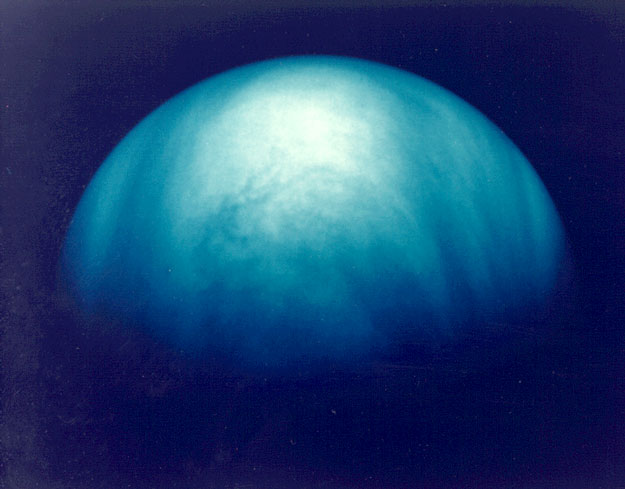
|
Explanation: Venus, the second closest planet to the Sun, is a popular way-point for spacecraft headed for the gas giant planets in the outer reaches of the solar system. Why visit Venus first? Using a "gravity assist " maneuver, spacecraft can swing by planets and gain energy during their brief encounter saving fuel for use at the end of their long interplanetary voyage. This colorized image of Venus was recorded by the Jupiter-bound Galileo spacecraft shortly after its gravity assist flyby of Venus in February of 1990. Galileo's glimpse of the veiled planet shows structure in swirling sulfuric acid clouds. The bright area is sunlight glinting off the upper cloud deck. A recent intriguing but controversial hypothesis holds that living microbes might exist in the upper clouds of Venus.
|
January February March April May June July August September October November December |
| |||||||||||||||||||||||||||||||||||||||||||||||||||||||
NASA Web Site Statements, Warnings, and Disclaimers
NASA Official: Jay Norris. Specific rights apply.
A service of: LHEA at NASA / GSFC
& Michigan Tech. U.
Based on Astronomy Picture
Of the Day
Publications with keywords: Venus - Galileo - Saturn
Publications with words: Venus - Galileo - Saturn
See also:
- APOD: 2025 September 25 B Saturn Opposite the Sun
- APOD: 2025 September 22 B Equinox at Saturn
- APOD: 2025 May 11 B The Surface of Venus from Venera 14
- The ISS Meets Venus
- APOD: 2025 March 16 B Venus and the Triply Ultraviolet Sun
- APOD: 2025 February 23 B Saturn in Infrared from Cassini
- A Conjunction of Crescents
